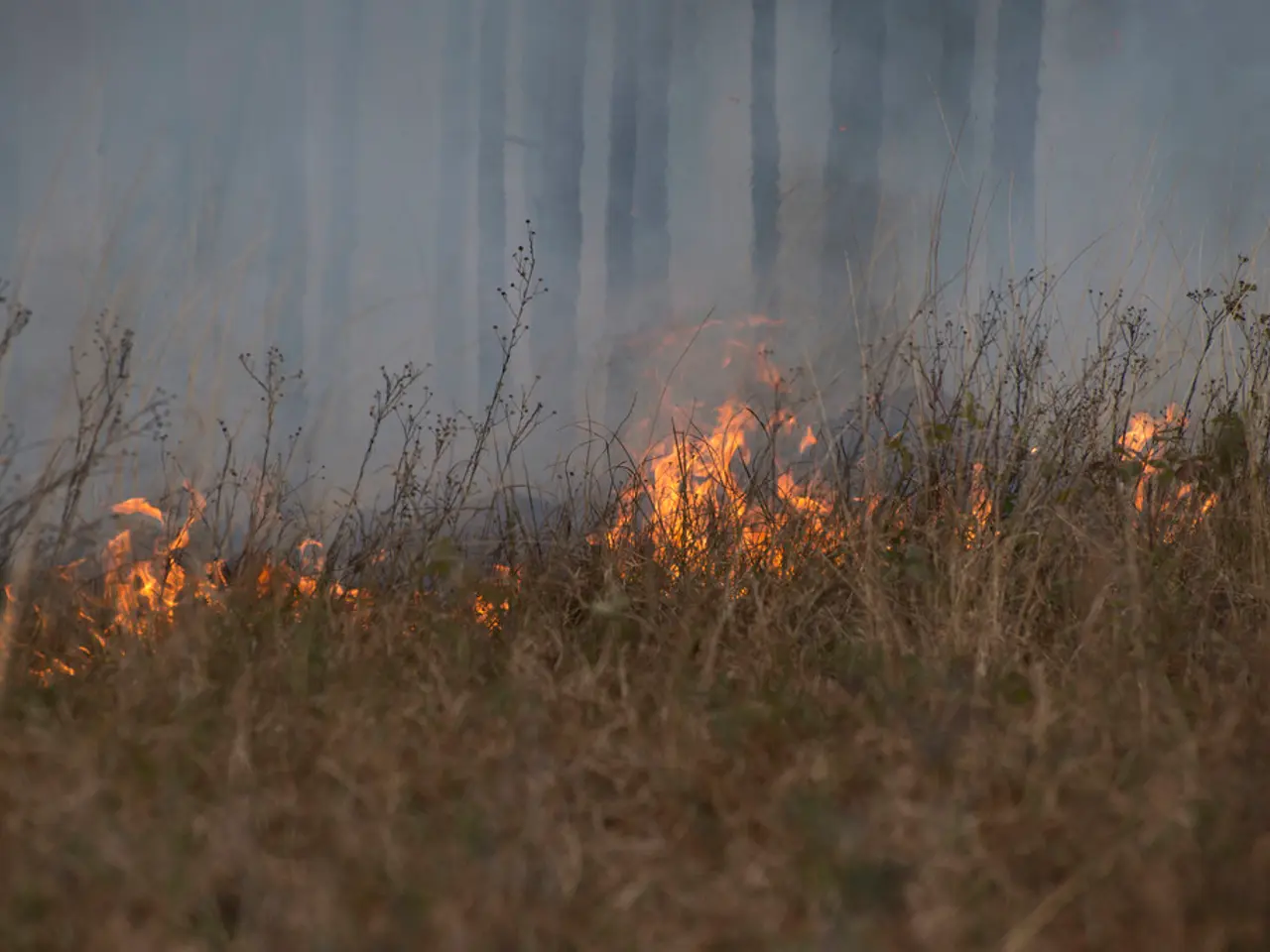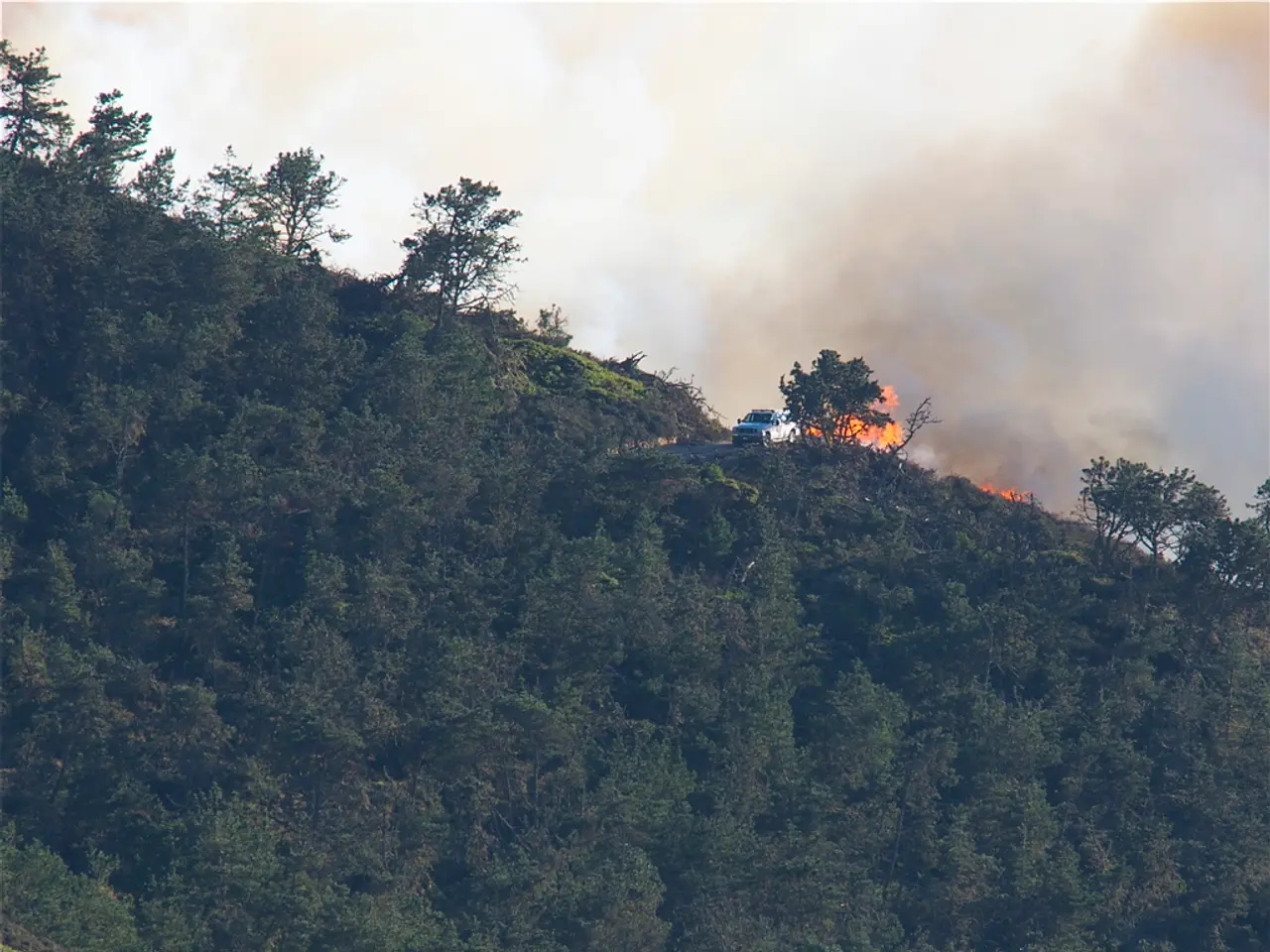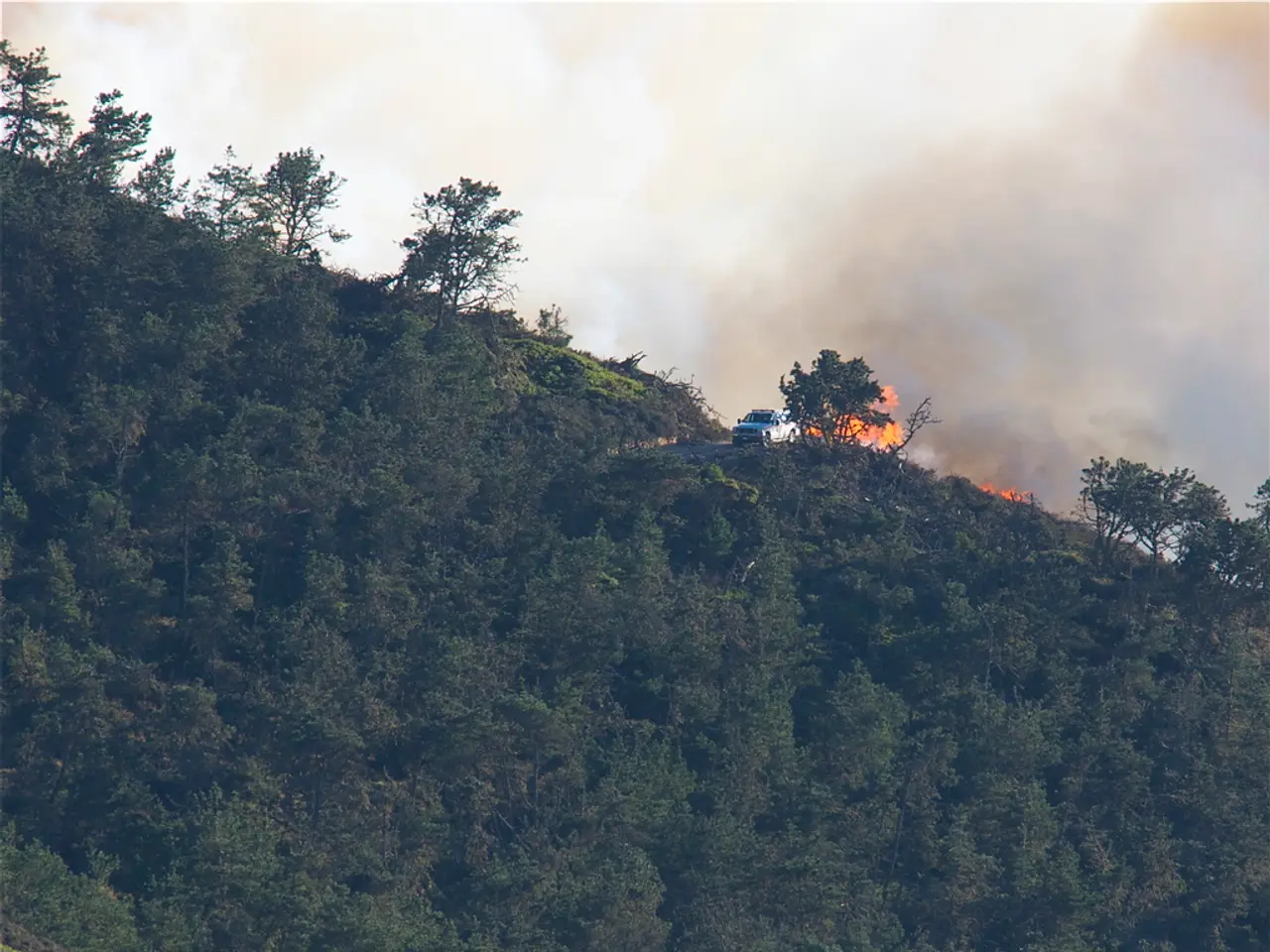Multiple Forests in Eastern Germany are Experiencing Infernos
In recent days, wildfires have been spreading across Europe, causing significant concern for emergency services and local communities. One of the most prominent fires is the Gohrischheide wildfire in eastern Germany, which began on July 1, 2025.
The fire, located near an old military training ground in eastern Germany, has posed significant challenges for emergency responders and forced the evacuation of over 100 residents from nearby villages such as Heidehäuser, Neudorf, and parts of Lichtensee.
## Current Efforts
Up to 1,000 firefighters and emergency personnel have been deployed to combat the blaze across Saxony and Thuringia, with the main focus on the Gohrischheide area near the border with Brandenburg. A state police helicopter equipped with special cameras is being used to detect hidden pockets of embers, helping to identify hotspots and prevent flare-ups. Authorities have evacuated affected villages and issued mobile phone alerts instructing residents to take essentials, inform neighbours, and use improvised respiratory protection (like cloth or surgical masks) if exposed to smoke. District officials have urged people to avoid the region by car to facilitate emergency operations and public safety.
## Major Challenges
The fire is burning on a former military training area, where the risk of ammunition detonating is significant. This danger severely limits the ability of firefighters to approach certain areas directly, complicating containment and suppression efforts. The fire has already burned hundreds to thousands of hectares (with some reports suggesting "hundreds of square kilometers," though this may be an exaggeration or error, as more typical figures cite hundreds of hectares). The vast, dry, and forested terrain makes it difficult to access and control the blaze. The region is experiencing a severe heatwave, with temperatures up to 40°C (104°F), which exacerbates fire behaviour and increases the risk of re-ignition even after initial containment. Authorities have warned that the fire could reignite, especially in Brandenburg, necessitating continued vigilance and readiness among firefighting crews.
## Elsewhere in Europe
Fires have also spread in southern Thuringia, and the authorities have declared a state of disaster. Disaster alerts have been issued for the communities of Zeithain, Wülknitz, and Gröditz. In the western Turkish province of Izmir, a forest and bushfire has resulted in the deaths of two men, including a forest worker helping to fight the flames. Three villages were evacuated as a precaution in the Turkish holiday regions of Cesme and Alacati due to a forest fire. A large forest fire has broken out near the tourist town of Ierapetra on the Greek holiday island of Crete, requiring evacuations of hotels, pensions, and three villages. The wildfire is located in a mine-contaminated area, making it difficult to extinguish.
Several forest fires occurred overnight in Bavaria, with the largest one covering around 14,000 square meters (1.4 hectares) in the Oberpfalz region. A large fire also broke out near the small port town of Rafina, northeast of Athens, Greece, necessitating the evacuation of three villages.
The ongoing wildfires across Europe underscore the need for continued vigilance and coordinated efforts to combat these destructive blazes. The Gohrischheide wildfire, in particular, presents unique challenges due to the presence of unexploded ordnance and the vast, hard-to-access terrain. Emergency services and local communities remain committed to managing these fires and protecting the affected areas.
- The Gohrischheide wildfire, situated near an old military training ground in eastern Germany, prompts challenges for environmental scientists as they study the impact of climate change on both the fire's intensity and the region's weather-forecasting models.
- To effectively combat the ongoing wildfires across Europe, weather-forecasting is crucial to anticipate shifting wind patterns, predicting potential fire outbreaks and subsequent spread.
- As the fire threatens various communities and ecosystems, it emphasizes the importance of ongoing research in environmental-science and climate-change studies to better understand and mitigate the effects of extreme weather events on our environment.








